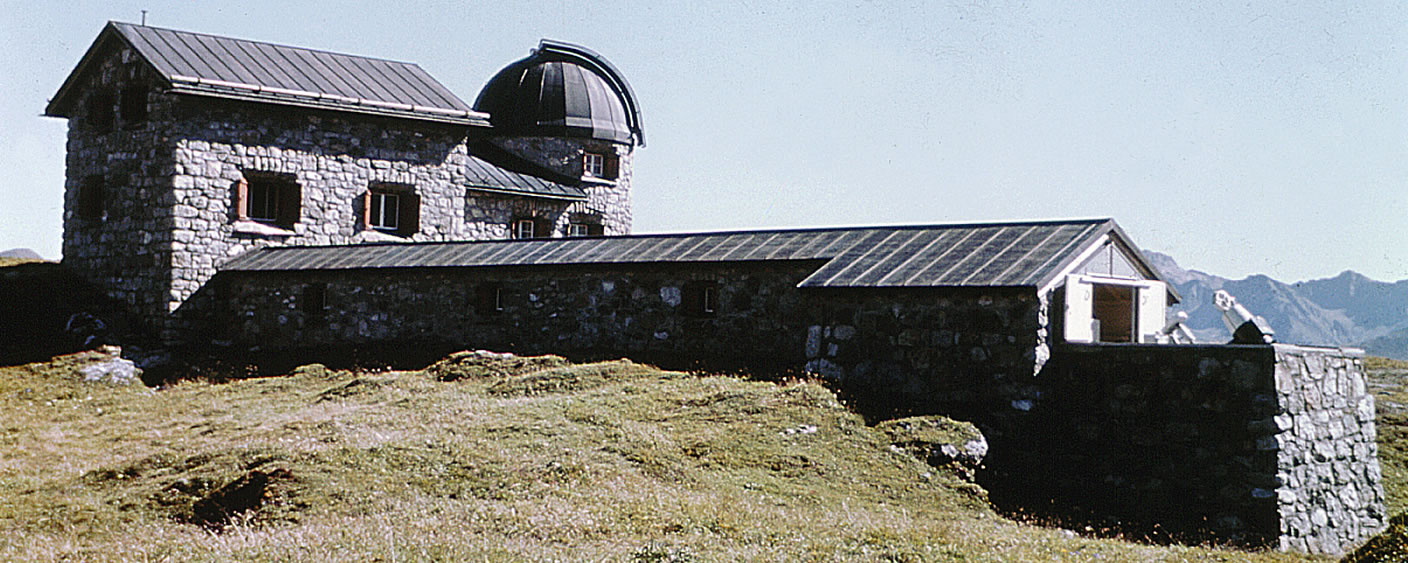Coronal research at the Eidgenössische Sternwarte

Ever since its foundation, the Eidgenössische Sternwarte was devoted to solar research. The oldest branch was sunspot statistics, which was famous all over the world and paved the way for numerous studies in the field of solar terrestrial relations. Not long after starting working as an assistant, external page Max Waldmeierpresented a long-term programme for researching corona, which were still a complete mystery at the time, to the then director William Brunner. On the one hand, the programme included the construction of the necessary instruments, especially a coronagraph; on the other hand, it recommended the erection of a high-altitude station as clear air was crucial for the project's success.
The construction of the coronagraph and the observatory
Although the plan was rejected by the Swiss School Board, it could still be realised after the Foundation for Research in Science and the Humanities at the University of Zurich provided the funding for the construction of the coronagraph. In the autumn of 1938, the instrument was installed in a provisional hut in Arosa-Prätschli (1,900 above sea level) and the first series of coronal observations was conducted between November 1938 and April 1939. As the project yielded positive results, a permanent observatory was planned.
The construction work began in August 1939 and by December the Astrophysikalische Observatorium Arosa had already opened its doors. Tschuggen (2,050 metres above sea level) was selected as the site – an isolated, undeveloped, non-forested peak rising 300 metres above Arosa and sheltered from the wind by a higher mountain chain. Built based on to a minimal programme, the observatory was expanded at a later date and new instruments were procured.
Coronal observations and solar eclipse expeditions
The coronal observations conducted at the Arosa observatory were supplemented with twenty solar eclipse expeditions between 1952 and 1980, which produced some key results. The extensive observation material obtained, which helped study the shape of the corona and its magnetic field, its variation on the eleven-year cycle and the analysis of the coronal structure, was published in numerous journals.